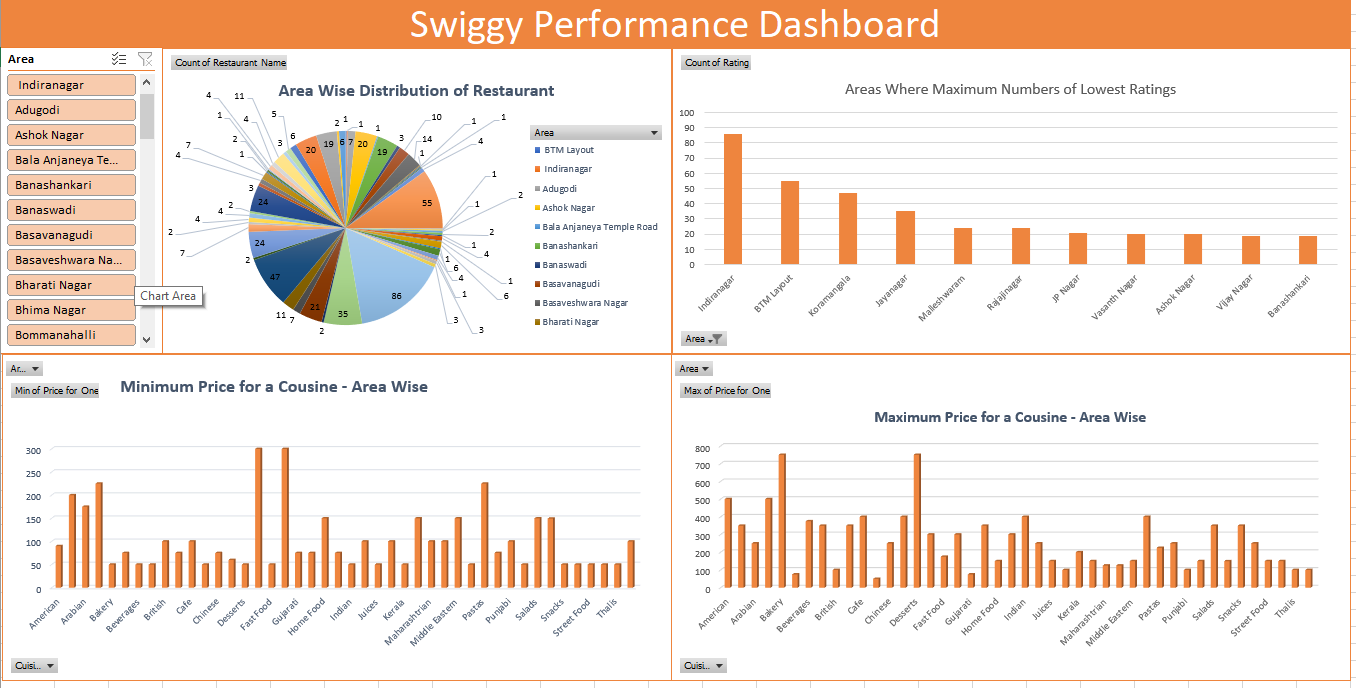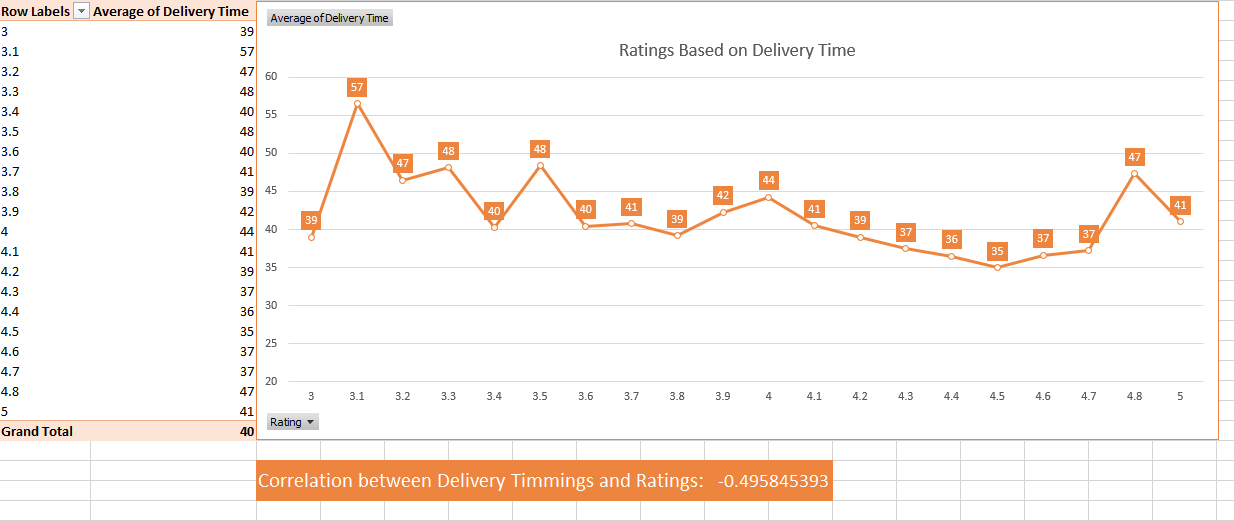This project focuses on using data analysis techniques to provide valuable insights for aspiring entrepreneurs in the food industry, particularly those looking to start their own restaurant businesses by analyzing Swiggy's extensive dataset.
Aim of the Project 🎯: The aim of this project is to empower aspiring entrepreneurs in the food industry by leveraging data analysis techniques on Swiggy's extensive dataset. This project seeks to provide valuable insights and actionable recommendations for individuals looking to start their own restaurant business.
Project Description 📃: The project delves into the food delivery industry by analyzing Swiggy’s data, extracting valuable insights using Python, Excel, and Power Query, and providing actionable recommendations to help entrepreneurs make informed business decisions.
Project Phases:
- Data Extraction using Python Libraries: Extracted data using Pandas and Requests, implementing web scraping techniques with Selenium for real-time data on restaurant listings, customer reviews, and menu items.
- Data Cleaning and Transformation using Power Query: Cleaned and transformed the dataset by removing duplicates, correcting location spelling, and addressing missing values to ensure data consistency.
- Data Analytics using Excel: Conducted statistical analysis and used pivot tables and charts to uncover insights on popular cuisines, customer preferences, peak ordering hours, and regional trends.
Steps involved in the process:
- Web Scrapping ⛏️: Automated data extraction from Swiggy by mimicking user behavior using Selenium to scroll and retrieve dynamically loaded content.
- Data Cleaning 🧹: Applied Power Query to remove duplicate records, standardize location names, and remove null values to ensure dataset accuracy.
- Insights Generated 📊: Conducted various analyses on restaurant distribution, pricing, popularity, and customer satisfaction, revealing valuable insights for business decision-making.
Important Insight: The analysis of low-rated restaurants has highlighted a unique business opportunity in areas with low customer satisfaction. Entrepreneurs can target these areas to meet the demand for quality food and prompt delivery services.
Conclusion: The Swiggy project provides valuable data-driven insights for entrepreneurs, helping them make informed decisions about market trends, location selection, and customer preferences, ultimately supporting business success in the competitive hospitality industry.
Key Learnings:
- Data-Driven Decision Making: The importance of leveraging data analytics for business decisions.
- Customer-Centric Approach: Prioritizing customer satisfaction for long-term success.
- Innovative Technology Adoption: Staying updated with technological advancements.
- Effective Partnerships: Forming strategic collaborations for business growth.
Future Scope:
- Market Demand Analysis: Leveraging Swiggy's data to understand local tastes and preferences.
- Location Intelligence: Using data to identify optimal locations for new ventures.
- Dynamic Pricing Strategies: Implementing real-time pricing strategies based on demand fluctuations.
- Supply Chain Optimization: Predicting demand for ingredients to optimize inventory management.
- Customer Behavior Analysis: Tailoring services based on customer ordering habits and feedback.
- Operational Efficiency: Streamlining internal processes for improved delivery and kitchen operations.
- Quality Control and Feedback Analysis: Enhancing dining experiences by addressing customer concerns and feedback.
- Expansion Strategies: Using demand trends to identify areas for expansion and growth.


